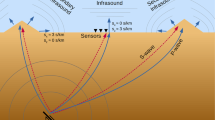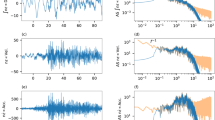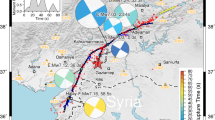Abstract
IN a report to the British Association in 1899 I directed attention to the fact that as an earthquake dies its seismograms indicate that it does so in a series of more or less rhythmically decreasing impulses. These, I suggested, were more likely to result from reflection than from interference, and therefore they were provisionally called echoes. Four years later (Phil. Mag., October, 1903) Dr. C. Coleridge Farr discussed the terminal wave group as interference effects between the free period of the recording boom and the period of the ground. Theoretical considerations show their existence, whilst an ingenious experiment carried out by Dr. Farr shows that it is not difficult to reproduce wave groups strikingly similar to those shown in many seismograms. On the two sides of a pillar carrying a pendulum with a period of 16.5 seconds Dr. Farr attached two boxes filled with sawdust. Two chains connected by a rope passing over pulleys hung over the centre of each box. This arrangement was worked up and down at a fixed speed, so that while one side of the pillar was loaded the other was unloaded. By working this arrangement, tiltings were given to the column representing groups of waves with periods varying between twelve and twenty seconds. The resulting diagrams gave three results:—
This is a preview of subscription content, access via your institution
Access options
Subscribe to this journal
Receive 51 print issues and online access
$199.00 per year
only $3.90 per issue
Buy this article
- Purchase on SpringerLink
- Instant access to full article PDF
Prices may be subject to local taxes which are calculated during checkout
Similar content being viewed by others
Author information
Authors and Affiliations
Rights and permissions
About this article
Cite this article
MILNE, J. Horizontal Pendulums and Earthquake Echoes. Nature 74, 515–516 (1906). https://doi.org/10.1038/074515b0
Issue date:
DOI: https://doi.org/10.1038/074515b0



